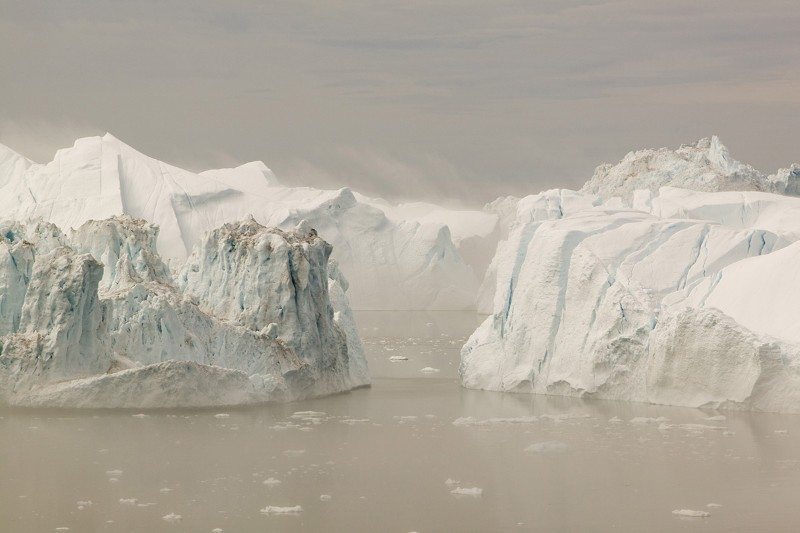 |
| Reviews and Templates for Expression We |
Leading climate scientist: Future is bleaker than we thought

The speed that ice around Antarctica will melt is under dispute (Image: Warming Images/Rex Shutterstockt)
Highly speculative. Full of conjecture. Based on flimsy evidence. Not supported by mainstream science. Not peer reviewed. Not suitable for basing policy on.
It sounds like climate scientists are talking about the claims of climate deniers. But this time they are talking about a 23 July discussion paper by James Hansen, the most famous and respected climate scientist on the planet.
In it, Hansen starts by arguing that the ice melting on and around Greenland and Antarctica will cause rises in sea level that are much faster than mainstream predictions, meaning that we are likely to see several metres of sea level rise this century. It is an argument he has been making for a long time: for instance in his 2007 feature for New Scientist.
Even more startling are the consequences that Hansen thinks will result from this rapid melt. Because fresh water is less dense than saltwater, the cold, fresh meltwater will pool around the coasts of Greenland and Antarctica.
Water blanket
Around Antarctica, this surface layer will act as a blanket, floating on top of warmer, saltier water and preventing it from losing heat to the air. Instead, this heat will go into melting the underside of ice shelves and glaciers. Hansen argues that the growth in sea ice around Antarctica is a sign that this is starting to happen already, with freshening surface water forming sea ice more readily.
This freshwater layer will also shut down the ocean currents that carry heat from the tropics to the poles, so the tropics will warm fast while high latitudes cool down because of the cold surface waters. This resulting temperature difference, Hansen claims, will power superstorms of a size and fury unlike anything we have ever seen.
Such superstorms occurred towards the end of the last interglacial period 120,000 years ago, the paper claims. It details several lines of evidence suggesting that the islands of the Bahamas were frequently pounded by massive waves at this time. For instance, there are wave-formed ridges many kilometres long on the islands, and wave deposits up to 40 metres above current sea level, including massive boulders weighing thousands of tonnes.
Most terrifying of all, Hansen thinks that all of this could happen with just a 2 °C rise in temperature – the supposedly safe limit.
The consequences, of course, would be catastrophic. “It is not difficult to imagine that conflicts arising from forced migrations and economic collapse might make the planet ungovernable, threatening the fabric of civilisation,” the paper states.
Far from conclusive
These claims certainly do not reflect the views of most of climate scientists, and the various lines of evidence presented in the paper are far from conclusive. Here’s the take-home message, however: we cannot be sure that Hansen is wrong.
When it comes to sea level, just about every glaciologist now agrees that we are heading for massive sea level rises of at least 5 metres. The only contentious issue is how fast this will happen.
The speed question cannot be definitively resolved by studying how fast ice sheets melted in past interglacial periods because the planet has never warmed as fast as it is now. Nor can it be settled by ice models because we have no way of confirming whether they are right about the rate of melting.
There is also wide agreement that large-scale melting of Greenland’s ice will shut down ocean circulation. Again, the main contentious issue is how soon it might happen – and there are hints that it is already happening.
There is certainly no agreement about the superstorms that Hansen predicts. But his argument is based on simple physics: winter storms are driven by the temperature difference between the poles and tropics, so if this difference temporarily increases due to massive ice melt, there will be a period of stronger storms.
The fact is that many of the consequences of rising greenhouse gases are extremely difficult to predict. We can be pretty confident about how much the planet will warm and how much the sea level will rise because there is plenty of evidence from the past, but beyond this there are huge gaps in our knowledge. How will plants respond? How many species will go extinct? How will food production be affected? These questions are almost impossible to answer, not least because the answers depend on us.
Unpleasant surprises
There have already been surprises. There is growing evidence, for instance, that much of the extreme weather around the planet in recent years is a result of changes in the behaviour of the jet stream as the poles warm. No one predicted this.
Indeed, the “official” projections of climate scientists have turned out to be too conservative time and time again. Antarctic melting is already a century ahead of schedule. Estimates of sea level rise by the Intergovernmental Panel on Climate Change are going up with every report. Hansen, by contrast, has a history of making predictions that turn out to be bang on the money.
That does not mean he is right again. But the mere possibility that he might be should make us all pause for thought. We are still gambling that we can get away with continuing business as usual without reaping the consequences in our lifetimes. It’s a high-stakes gamble that could go horrifically wrong.
|
|
|
|
Copyright 2011 Energy and Technical Services Ltd. All Rights Reserved. Energyts.com |